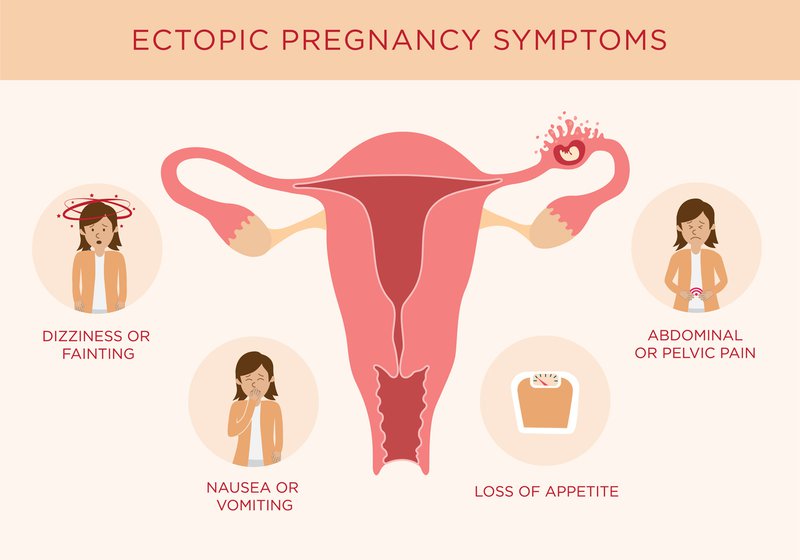Have you ever wondered about laparoscopic surgery? This minimally invasive technique offers a range of benefits, especially for addressing women's health issues. In this blog, you'll discover the various aspects of laparoscopic surgery and how it impacts explicitly the female body. Our team, including the highly skilled Dr. Jones, excels in these advanced surgical methods. Let's embark on a journey to understand laparoscopic surgery better.
Advanced Laparoscopic Surgery
Our clinic specializes in performing advanced laparoscopy, a minimally invasive surgical procedure that involves making a small incision on the abdominal skin. This technique is commonly used for the diagnosis and treatment of several women's health conditions, including:
- Fibroids: Advanced laparoscopy can help remove fibroids, which are benign growths in the uterus that can cause pain and heavy menstrual bleeding.
- Endometriosis: This surgical procedure can effectively treat endometriosis, a condition where the tissue lining the uterus grows outside of it, leading to pelvic pain and infertility.
- Ovarian cysts: Advanced laparoscopy allows for the removal of ovarian cysts—fluid-filled sacs that can develop on or within the ovaries and cause discomfort or hormonal imbalances.
- Infertility: In some cases, advanced laparoscopy aids in identifying and addressing underlying causes of infertility, such as blocked fallopian tubes or uterine abnormalities.
The advantage of advanced laparoscopy is that patients typically experience a quicker recovery time compared to traditional open surgery. Most individuals who undergo this procedure can expect to resume their normal activities within 1–2 days.
Exploring Robotic Laparoscopic Surgery
Robotic-assisted laparoscopic surgery is fascinating. This innovative approach combines the precision of robotic technology with the less invasive nature of laparoscopic surgery. You'll appreciate the significant advantages, such as enhanced accuracy and shorter recovery times; however, you must be aware of potential limitations, like the necessity for specialized equipment and expertise.
A surgeon controls a robotic arm that holds the surgical instruments during the procedure. The robotic arm is guided by a computer system that translates the surgeon's movements into precise movements of the instruments. This allows for greater accuracy and precision than traditional laparoscopic surgery.
One of the most significant benefits of robotic-assisted laparoscopic surgery is the shorter recovery time. Because the procedure is less invasive, you'll experience less pain and discomfort, allowing you to return to your normal activities sooner. Additionally, the smaller incisions decrease the likelihood of laparoscopic surgery scars compared to traditional surgery.
Understanding Laparoscopic Surgery Scars
When you undergo laparoscopic surgery, scarring is a natural concern. Fortunately, this type of surgery typically results in smaller scars than traditional methods. The size and appearance of these scars can vary depending on several factors. To minimize scarring and promote healing, it is important to diligently follow post-operative care instructions, which may include using scar-reducing treatments and protecting the scars from direct sunlight.
When it comes to laparoscopic surgery scars, the size and appearance can vary depending on the type and location of the procedure. Here are a few common types of scars you may encounter:
- Single Incision Laparoscopic Surgery (SILS) Scar: In SILS, a single small incision is made near the belly button, resulting in a scar that is usually concealed within the natural folds of the skin. This type of scar is less noticeable due to its placement.
- Multiple Incision Laparoscopic Surgery Scar: For procedures that require multiple incisions, such as the removal of fibroids or ovarian cysts, several small scars may be scattered across the abdomen. These scars are typically small and fade over time.
- Umbilical Scar: When an incision is made in or around the belly button, it can result in an umbilical scar. This scar may appear as a small line or indentation around the navel area.
- Suprapubic Scar: If an incision is made below the bikini line (suprapubic region), such as during surgery for endometriosis or pelvic organ prolapse repair, you may have a suprapubic scar. This scar is usually horizontal and located low on your abdomen.
Remember that everyone's healing process is different, and scars will naturally fade. Adhering to the post-operative care instructions provided by your surgeon is essential to minimize scarring and promote optimal healing.
Ovarian Cyst Laparoscopic Surgery
Laparoscopic surgery is a commonly used treatment for ovarian cysts, including those caused by Polycystic Ovary Syndrome (PCOS).
Ovarian cysts can cause various symptoms, depending on their size and location. Common symptoms of ovarian cysts include:
- Pelvic pain: Ovarian cysts can cause pain or discomfort in the pelvic area. The pain may be dull or sharp and can vary in intensity.
- Abdominal bloating: Large ovarian cysts can cause the abdomen to feel swollen or bloated. This bloating may persist and not disappear with changes in diet or exercise.
- Irregular menstrual cycles: Ovarian cysts can disrupt the normal hormonal balance, resulting in irregular periods. Women with ovarian cysts may experience heavier or lighter periods than usual, as well as changes in the length of their menstrual cycle.
- Painful intercourse: Some women with ovarian cysts may experience discomfort or pain during sexual intercourse. This can result from the pressure exerted by the cyst on nearby organs or tissues.
- Frequent urination: If an ovarian cyst is large enough, it can put pressure on the bladder, causing frequent urination or a constant urge to urinate.
This type of surgery is preferred due to its minimally invasive nature, which results in fewer complications and a faster recovery time. The scars from this surgery are usually small and can heal with proper care. Although the recovery time can vary, many women are able to return to their normal activities relatively quickly.
Recovering from Endometriosis Laparoscopic Surgery

Recovering from laparoscopic surgery for endometriosis can be a challenging journey. Still, there are several things you can do to make the process smoother. Here are some helpful tips:
- Manage pain: Pain is a common symptom after surgery, but it can be managed with medication prescribed by your doctor. Make sure to take your medication as directed and report any severe pain to your doctor.
- Promote healing: Eating a healthy diet, staying hydrated, and getting enough rest are crucial for promoting healing. Make sure to follow your doctor's advice on diet and activity restrictions.
- Gradually return to daily activities: It is important to take it slow and gradually return to your daily activities. Avoid heavy lifting, strenuous exercise, and sexual activity for the first few weeks after surgery.
- Follow your doctor's advice: Your doctor will provide specific instructions on how to care for yourself after surgery. Follow these instructions carefully and report any concerns or complications to your doctor.
- Get enough rest: Rest is crucial for healing after surgery. Ensure adequate sleep and take naps during the day if needed.
- Engage in light activities: Walking and other light activities can help promote healing and prevent complications such as blood clots. Follow your doctor's advice on when to start these activities.
By following these tips and working closely with your doctor, you can have a smoother recovery from laparoscopic surgery for endometriosis.
How Soon Can I Exercise After Laparoscopic Surgery for Endometriosis?
Returning to exercise after laparoscopic surgery for endometriosis should be a gradual process. Start with light activities and slowly increase the intensity as recommended by your healthcare provider. Paying attention to your body and not rushing the process is critical to a healthy recovery.
How Long After Laparoscopic Surgery Can I Take a Bath?
After your laparoscopic surgery, keeping the incision sites dry is essential to prevent infection. You can usually take a bath once the incisions have healed sufficiently, a timeline your doctor will confirm. Until then, opting for showers is the recommended approach.
Ectopic Pregnancy Laparoscopic Surgery
Laparoscopic surgery is a key treatment for ectopic pregnancy. This procedure involves removing the ectopic tissue while preserving as much of the reproductive organs as possible. The recovery process is typically faster than traditional surgery, but following post-operative guidelines is important for a smooth recovery.

Can You Have Laparoscopic Surgery While on Your Period?
You might wonder if you can undergo laparoscopic surgery during your menstrual cycle. Generally, the answer is yes, but it depends on your situation. Your surgeon will discuss any unique considerations or precautions you might need to take.
Sex After Laparoscopic Surgery
Resuming sexual activity after laparoscopic surgery is a common concern. It's advisable to wait until your doctor gives you the go-ahead, which typically occurs after full recovery from the surgery. Listen to your body and take necessary precautions to avoid discomfort.
Learn More About Surgery at the Woman’s Clinic
Laparoscopic surgery represents a significant advancement in medical technology, offering numerous benefits for women's health. Whether it's treating ovarian cysts, endometriosis, or managing ectopic pregnancies, this minimally invasive approach has revolutionized many aspects of gynecological care. Always consult with your healthcare provider, such as Dr. Jones—our newest expert member at The Woman’s Clinic Family—for personalized advice and guidance. Stay informed, confident, and proactive about your health!

